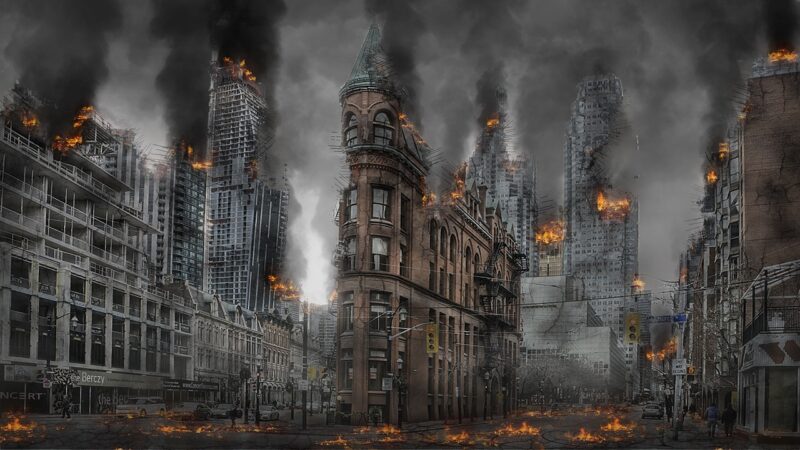From Reality to Fiction: How War Films Reflect Real Conflicts
November 18, 2024

War films have long served as both entertainment and as a lens through which audiences can understand the complexities of real-world conflicts. From the trenches of World War I to the intricate political landscapes of more recent conflicts, war films do more than just recreate battles; they offer insights into the human experience, showcasing not only the heroics but also the tragedies of war. In this article, we explore how these cinematic portrayals reflect real-life conflicts and what they mean for our understanding of war and its aftermath.
1. Historical Accuracy vs. Artistic License
While many war films strive for historical accuracy, the lens of cinema often necessitates artistic license. Filmmakers may take creative liberties to enhance the narrative, evoke emotion, or convey messages that resonate with contemporary audiences. Yet, how closely do these films align with the actual events they portray?
Take “Saving Private Ryan” as a prime example. Directed by Steven Spielberg, this film is renowned for its realistic depiction of the Normandy invasion during World War II. Its opening scene, which showcases the brutality of D-Day, is often cited as one of the most accurate portrayals of war ever captured on film. However, the narrative revolves around a fictional mission to rescue a paratrooper, which serves as a device to explore deeper themes of sacrifice and brotherhood, rather than a strict recounting of historical events.
Contrasting such films are works like “American Sniper,” which while grounded in the real-life experiences of Navy SEAL Chris Kyle, has faced criticism for its portrayal of the Iraq War and the ethics surrounding it.
Ultimately, the balance of historical authenticity and storytelling is a delicate dance. Audiences should approach these films with an understanding that while the portrayal may resonate with truth, the narrative may not always align with historical accuracy.
2. Reflecting Society’s Attitudes Towards War
War films are often reflective of societal attitudes toward military conflicts at the time of their release. During World War II, films often presented clear-cut depictions of heroism and national pride. Movies like “The Great Escape” and “Flags of Our Fathers” encapsulated the sense of duty and valor in fighting against tyranny.
However, as public sentiment toward wars evolved—particularly in the wake of Vietnam and Iraq—so too did the portrayal of military conflicts in cinema. Films such as “Apocalypse Now” and “Full Metal Jacket” depicted the psychological turmoil of soldiers and critiqued U.S. involvement in foreign conflicts, shedding light on the moral ambiguities and unforeseen consequences of warfare.
These shifts illustrate how filmmakers can use the backdrop of war to comment on societal fears, anxieties, and the evolving view of military service, often challenging audiences to grapple with the harsh realities that accompany such conflicts.
3. Emotional Impact and the Human Experience
At the heart of many war films lies a commitment to explore the emotional impact of conflict on individuals and families. Movies like “The Hurt Locker” and “Dear John” emphasize the psychological toll that war takes not only on those deployed but also on their loved ones back home.
Through personal stories, these films present a more nuanced depiction of war that transcends the battlefield. They address themes of PTSD, grief, love, and loss, fostering empathy among audiences for both soldiers and civilians affected by war. By focusing on individual narratives, filmmakers invite viewers to reconsider war’s broader implications beyond statistics and headlines.
Additionally, these emotional portrayals can serve as powerful reminders of the human cost associated with military conflicts, moving audiences to reflect on the plight of those enduring enduring effects long after a conflict has ended.
4. The Role of Propaganda in War Cinema
War films have historically been utilized as tools of propaganda, shaping public perceptions of conflict and encouraging nationalistic sentiment. Governmental bodies have recognized the power of film in disseminating information and often endorse projects that align with their political agendas.
An essential example is “Why We Fight,” a series of propaganda films commissioned by the U.S. government during World War II, focusing on justifying America’s involvement in the war. Such films were instrumental in rallying support on the home front and boosting enlistment.
Over time, the nature of war films has evolved from overt propaganda to more complex narratives that often challenge prevailing narratives.
Modern films such as “Restrepo” are marked by their documentary-style approach that seeks to present the unvarnished reality of soldier lives in combat zones, allowing viewers to form their interpretations apart from propaganda narratives.
5. Emerging Trends: Video Games and Interactive Media
In the digital age, the boundaries between film and other forms of media, such as video games, have begun to blur, offering immersive experiences that portray real conflict scenarios. Popular games like “Call of Duty” and “Battlefield” provide players with a virtual experience of warfare, often based on real-life conflicts.
Game developers strive to incorporate realistic graphics, narratives, and audio that reflect their inspirations from actual events. However, these interactive experiences also raise ethical concerns about the representation of violence and the glorification of war. Critics argue that they may desensitize the public to real-world violence or create misguided perceptions of military service.
As technology continues to evolve, filmmakers and game developers alike will have to navigate this landscape carefully, finding a delicate balance of entertainment and realistic portrayal while maintaining sensitivity towards real issues.
Conclusion: Understanding War Through Cinema
War films serve as a unique cultural artifact, offering insights into the narratives surrounding real-life conflicts while providing a space for audiences to engage with difficult themes of sacrifice, morality, and identity. They influence not only the perception of past wars but also shape contemporary views on military conflict.
As viewers, engaging with these films encourages a more informed understanding of the realities of war, making it imperative to view them through a critical lens. While they may not always paint an accurate picture, they provide a valuable commentary on the human experience and the complex tapestry of historical narratives. Ultimately, engaging with war cinema invites us to consider the deeper implications of conflict and the continued ramifications for both those who serve and the communities they leave behind.








